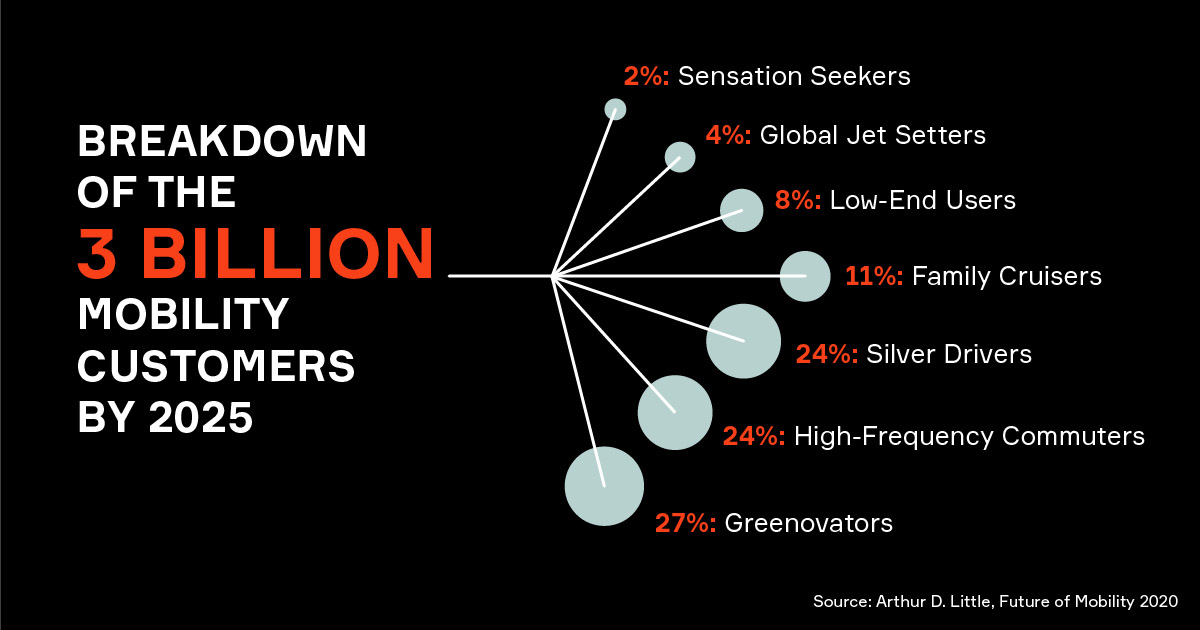Millennials are expected to account for 75 percent of the three billion global workforce by 2025 and are currently the largest living generation in the United States.This generation has less money to spend and are putting off major purchases like houses, cars and luxury goods or avoiding them entirely. They are turning to a new set of services that provide access to products without the burden of ownership, thus giving rise to a “sharing economy.” With instant access to price comparisons, product information and peer reviews, this generation is looking for the brands that offer the most value at the lowest possible costs.
Millennials are also in the active pursuit of being healthy and using eco-friendly products, driving the industry to make significant decisions about the products they are building. Their affinity for technology is a key driver in the future of smart mobility. These insights have driven us to create the CASE framework, the fundamental pillars of automotive transformation.
This outlook on the future of mobility consumption clearly illustrates the need for new automotive business models that cater to the evolving needs of consumers that include green, on-demand and great user experience mobility options.
What does the future of mobility look like? Who will consume these transportation services in the near future? Arthur D. Little, in his research "Future of Mobility 2020", defines the seven types of mobility consumers of the future:
- Greenovators: Sparking green innovation and taking up the majority, these mobility consumers will be primarily interested in smart, green and sustainable mobility options. They will demand the integration of ecological mobility concepts oriented toward their own personal well-being and the good of society.
- Family Cruisers: There will be an increase in the fragmentation of family and friends network, resulting in an increased demand of customized mobility options for these consumers.
- High-Frequency Commuters: They will be extremely mobile job nomads, who are on their way to work, to meet customers/ business partners and for short-term projects. They will be able to organize themselves in carpools at short notice and would prefer ride-sharing and short-term car rental options.
- Silver Drivers: These comprise of a new generation of older people that will predominantly choose vehicles that will meet their comfort requirements. They have a wide variety of mobility interests and are extremely active in their leisure life.
- Global Jet Setters: This group is always en-route between the major cities of the world. They demand mobility options that offer them the feeling of comfort and productivity.
- Sensation Seekers: These mobility consumers will view cars as the ultimate objects of experience and will be ready to pay for it. They will link driving to attributes like freedom, fun and pleasure and demand a multimedia networking experience with maximum safety.
- Low-End Users: A significant segment of mobility consumers will no longer be able to afford individual mobility to the extent they do now due to rising fuel prices and government regulations. They will drive the demand for efficient and inexpensive mobility solutions.
Click here for part 1 and 3 of our blog series.

